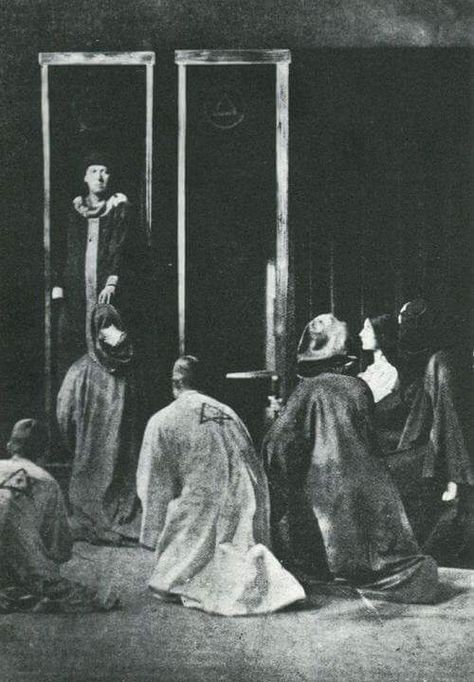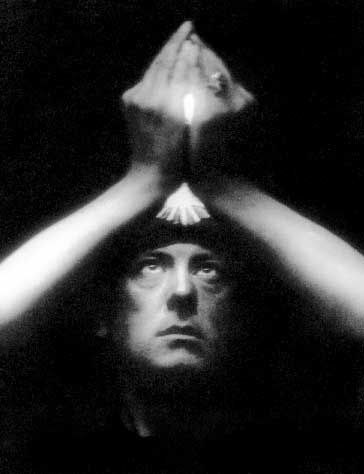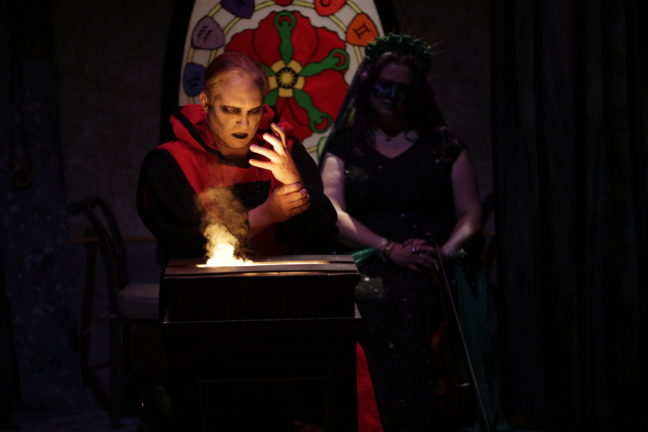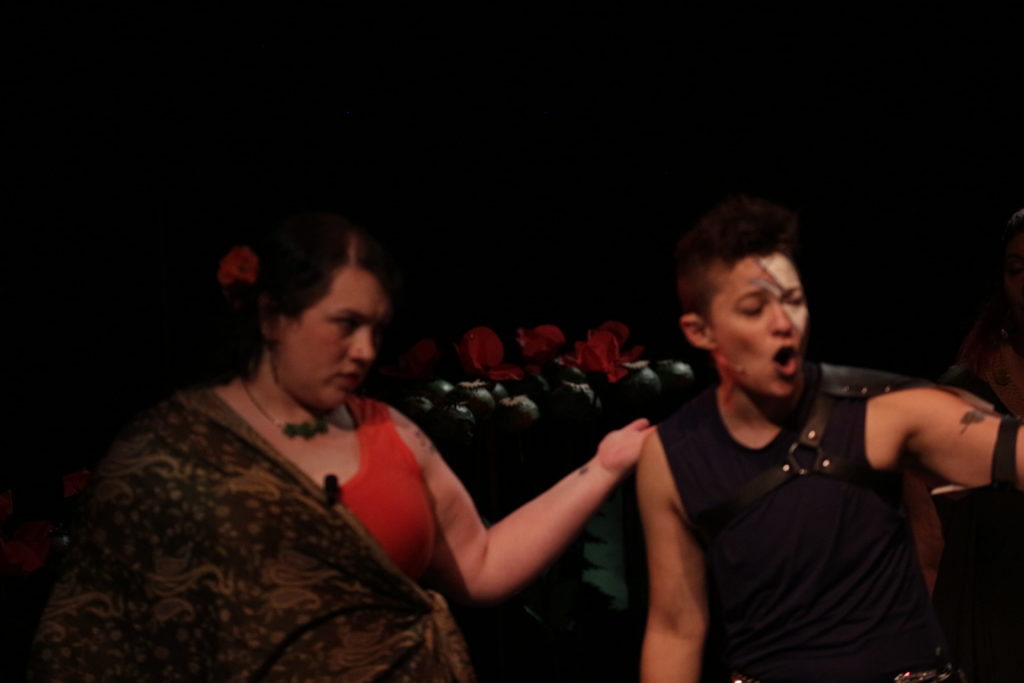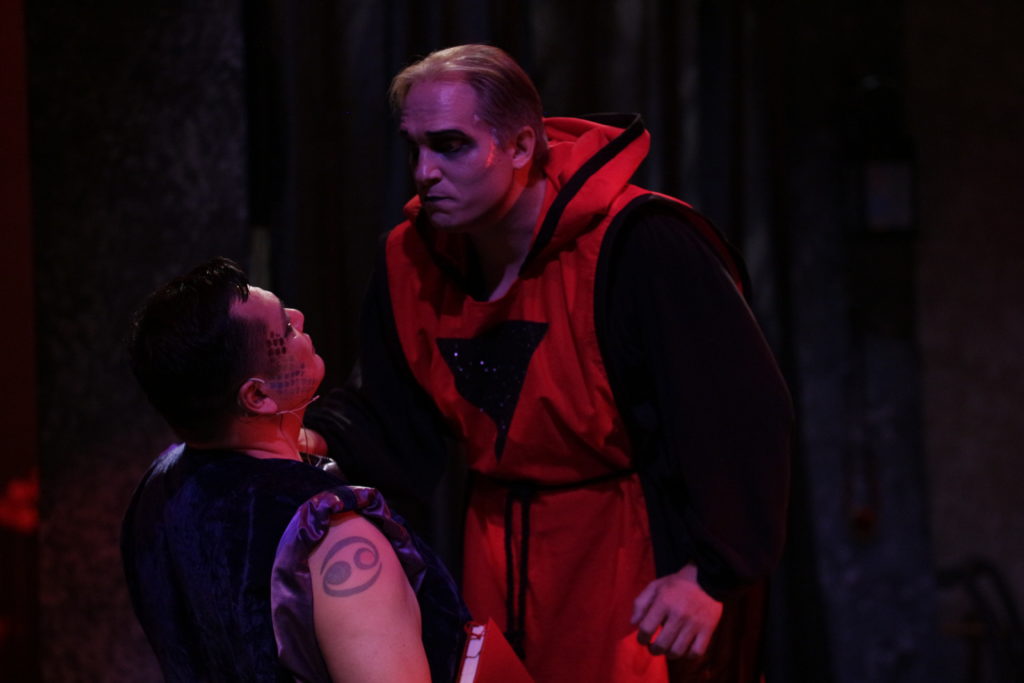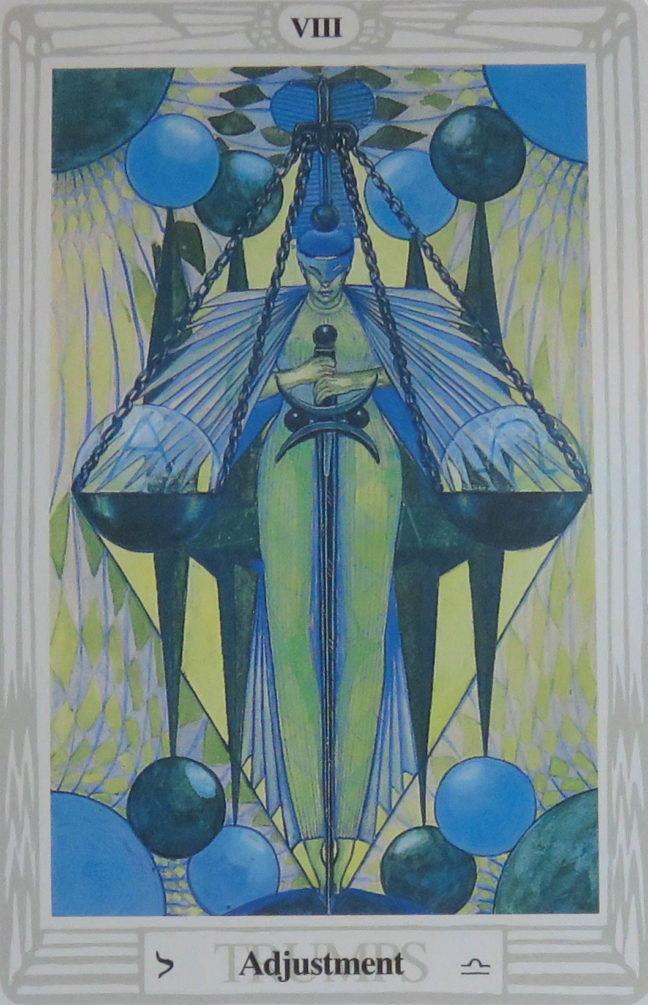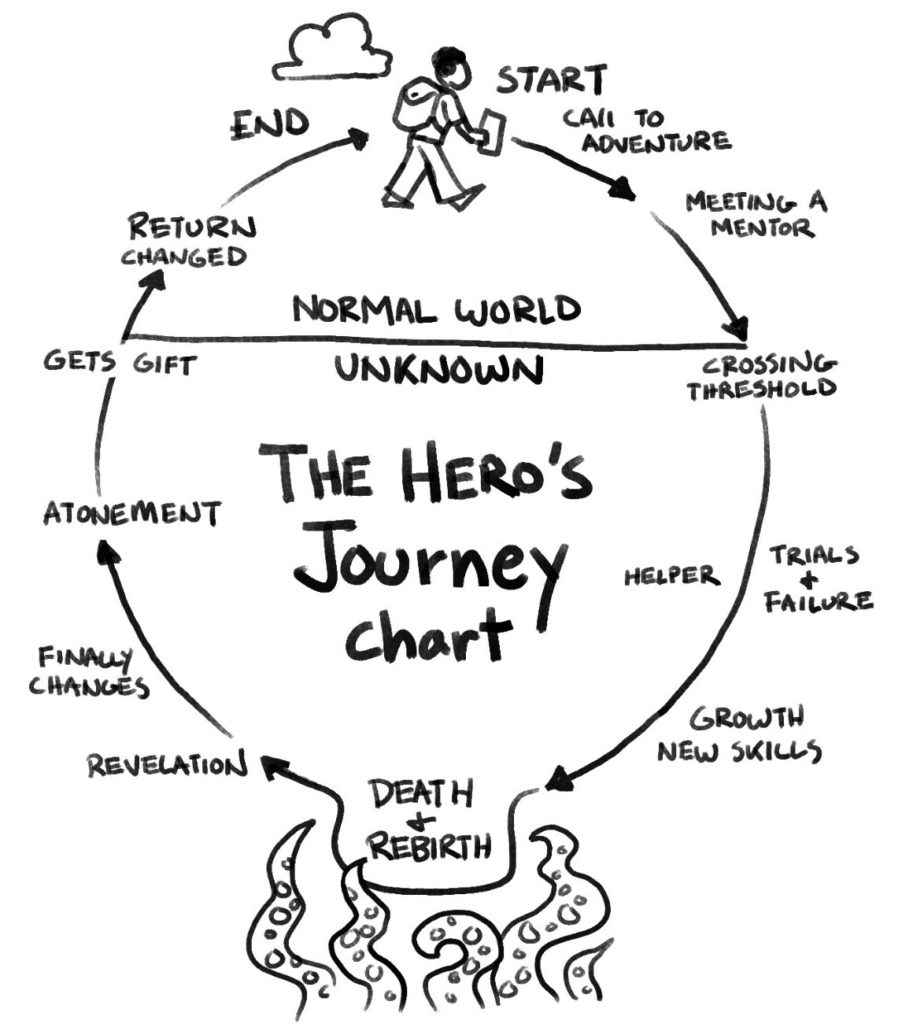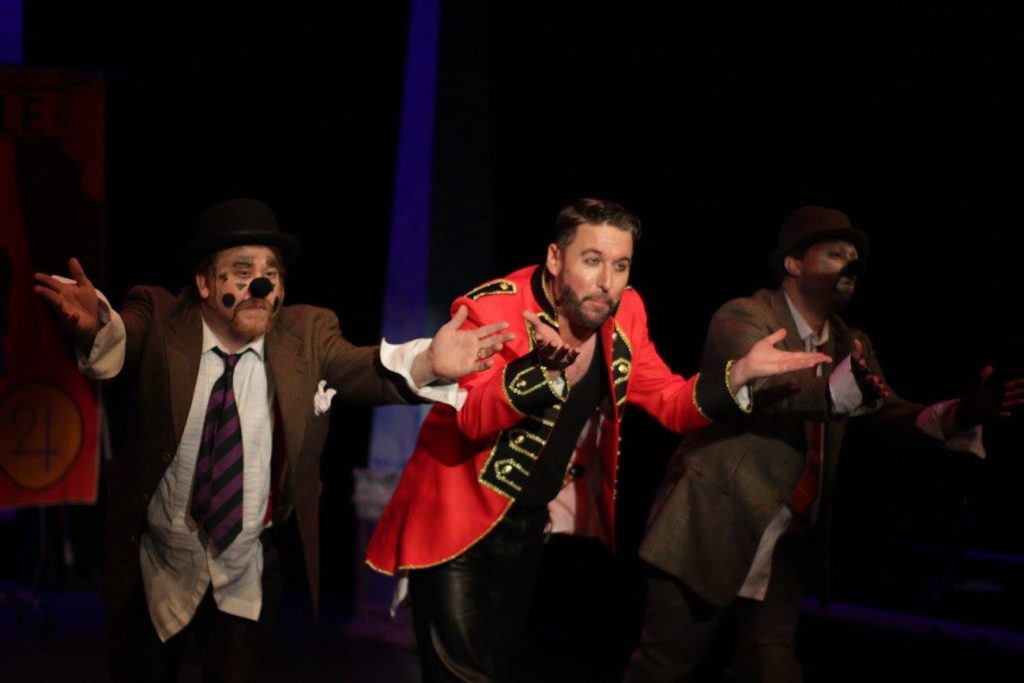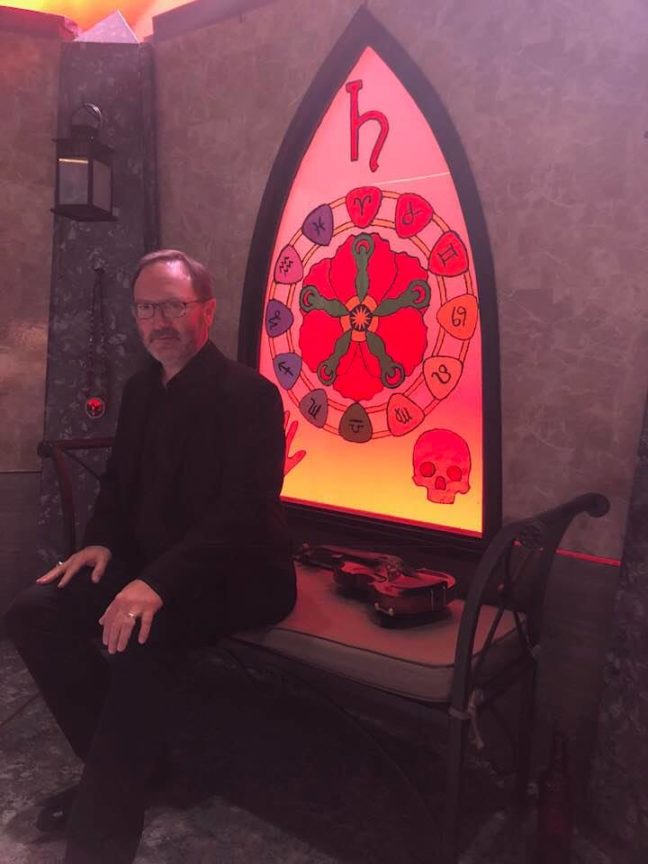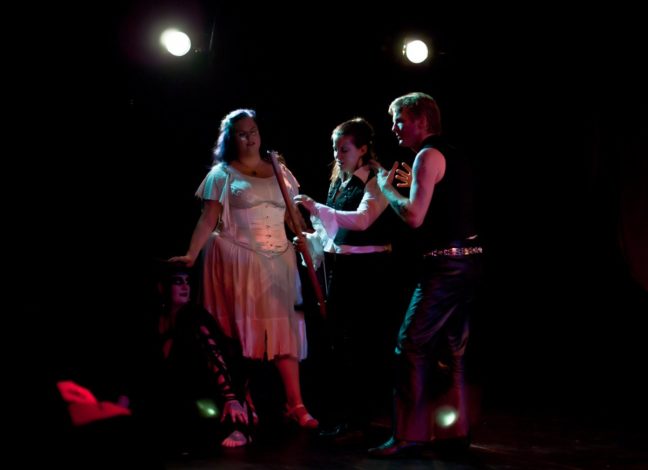Let’s begin with the assumption that you want to make art, be it staging a Rite of Eleusis, or any other means of self expression. Then let’s continue with the idea that you want to share that art with other people.
How do you do it?
Start with the basics: social media, invite your friends, posters, and reaching out to any special interest blogs, podcasts or online magazines that appeal to your target audience.
But in terms of really bringing in an enthusiastic crowd, we suggest you make an event of the presentation. Over the years we explored several manners for doing this to greater and lesser success. Here is a mile high overview of our strategy.
We Started Taking the Show on the Road
We staged The Rite of Luna in 2005, and before presenting it in May in Seattle, we traveled to Sekhet Maat Lodge in Portland, OR to do a “pre-show”.
This was a somewhat stripped down version of the final presentation, without the multimedia aspects and some of the larger set pieces. But it served as a target date to get the cast ready for performance, allowed us to create buzz around the material we were presenting, and work out some of the kinks in front of a supportive crowd.
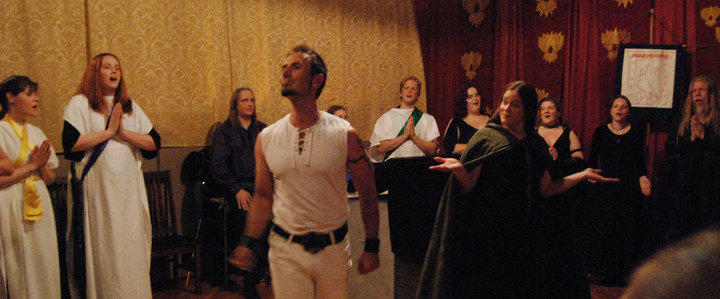
The members of the Lodge really loved having us, and we learned that strange rule performing artists encounter, the further you travel, the cooler you are.
This method went well enough that we used the same strategy for two more shows, The Rite of Venus in 2007, and The Rite of Mercury in 2010. At some point I should go into detail on The Rite of Venus 7/7/7 event, as that deserves a post all it’s own.
As we continued to explore this strategy, we discovered that there were problems and expenses associated with travel we had not anticipated. In addition, as our sets grew more and more elaborate, the idea of bringing them to other locations became more problematic.
So we needed to explore a new strategy.
We Brought the Show Home
Employing that aforementioned strange rule (the further you travel, the cooler you are) in it’s converse, we decided to invite a guest speaker from out of town with a solid draw (and so much charm!) to speak for one of our performances. We then increased the ticket cost for that one show enough to cover airfare and expenses.
Thus we had one person traveling, no sets, and a draw that naturally created a more robust event. Additionally, buzz about the lecture event increased buzz about the remaining performances.

Our first guest lecture was delivered by the inestimable Lon Milo DuQuette, who was kind enough to give a talk and performance before one of our presentations of The Rite of Sol, as well as provide a couple of lectures for Horizon Lodge, our local O.T.O. body.
We had this wonderful plan to record the lecture on video and make it a special feature on the DVD. Unfortunately, there was a problem with the recording media. The video was entirely lost. But as fate would have it, we had audio rolling through the lecture as well.
Our good friend Daniel Christensen volunteered to create a power point style video to accompany the lecture, which we placed on YouTube, and which continues to receive traffic to this date.
Incidentally, Daniel has invited his mother to several of our presentations, which she has always graciously attended and appreciated. After seeing the last one, Daniel proceeded to show her clips from some of the others she had missed, and to try to explain the overall narrative. She was confused by much of this. Eventually, he showed her the video he had created for Lon’s lecture.
After watching it, she turned to him and asked: “Why didn’t you show this to me first?”
As it turns out, this lecture is an excellent introduction to the overall structure of The Rites of Eleusis.
After our success with a guest speaker for The Rite of Sol, we decided this was a better investment of our resources. Since then we have had the pleasure of having Richard Kaczynski, Merle Ward and Dr. David Shoemaker provide guest lectures, each bringing their own wit and wisdom to their presentations.
The best part of this practice is having the opportunity to hear the lectures in the theater, while immersed in the work itself. It really drives the material home.


